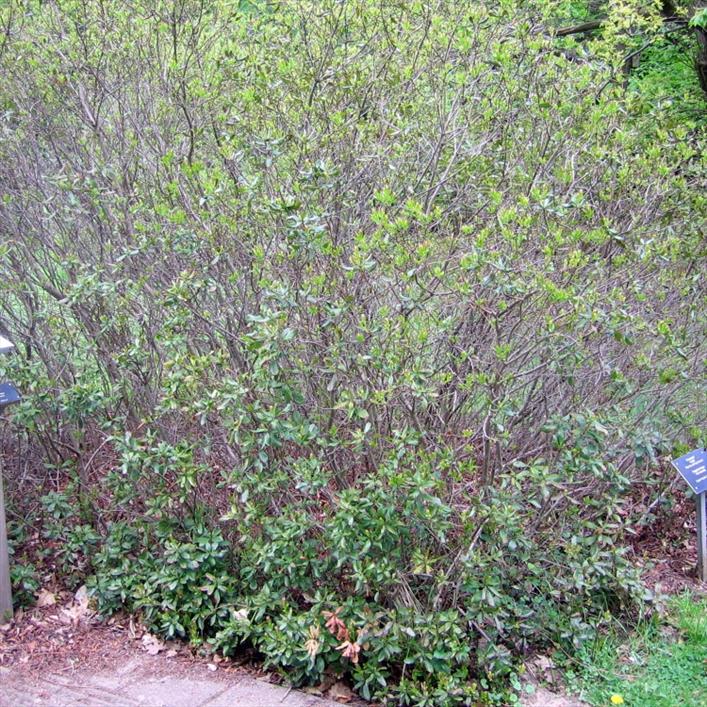Southern Bayberry or American myrtles or Southern Wax Myrtle
Morella caroliniensis
Bayberry family (Myricaceae)
A culture experiment gone wrong?
The spherical, knobbly drupe (stoned fruit) of this 2.5 m high myrtle is covered in a white waxy layer hence it Dutch vernacular name wasgagel or ‘wax myrtle’. This plant is wind pollinated in April and May; fruit are then dispersed by birds. The leaf releases an aromatic smell when bruised and is slightly toxic and slightly hallucinogenic. The southern bayberry is a native of eastern North America and appears in England and the Netherlands as a naturalised species. Because it was already present in the Netherlands before 1900, this species is counted as being native.
Read more.... »Themes
Morella caroliniensis is wind pollinated in April and May; fruits are then dispersed by birds.
The leaf of Morella caroliniensis releases an aromatic aroma when bruised.
Traditionally the fruit was used to make traditional Christmas decorations - the so-called 'Bayberry candles'.
The leaf of Morella caroliniensis is slightly toxic and slightly hallucinogenic.
Details
| Description: | Shrub, up to 2.50 m, dioecious. |
|---|---|
| Distributions: | Eastern north america, introduced to the netherlands prior to 1900 and became stablished |
| Habitat: | Wet heathland and swamp forests. sunny to shaded sites, partly overgrown, weakly acidic to acidic, nutrient-poor, peaty, sandy or loamy soils. |
| Year cycle: | Perennial (polycarpic evergreen) |
| Hardiness: | -4 - 5 f (hardy - very cold winter) |
| Flowering period: | April - juni |
| Flower color: | Brown, green |
| Notes on flowers: | Aan aparte struik mannelijk katje lichtgroen, aan aparte struik vrouwelijk katje groenbeige |
| Fruiting period: | September |
| Fruit color: | Blue |
| Notes on fruits: | Klein, rond, blauw met witte waslaag. |
| At its best: | April - mei |

